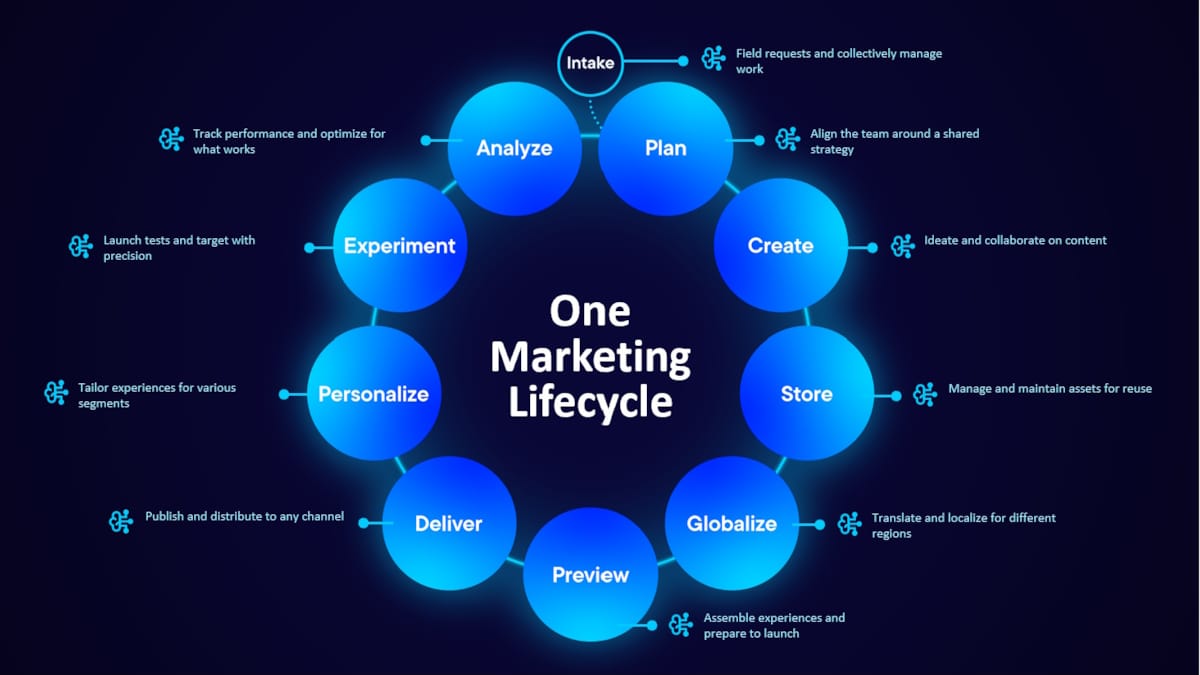
Opticon 2023 Highlights: Optimizely SaaS Core
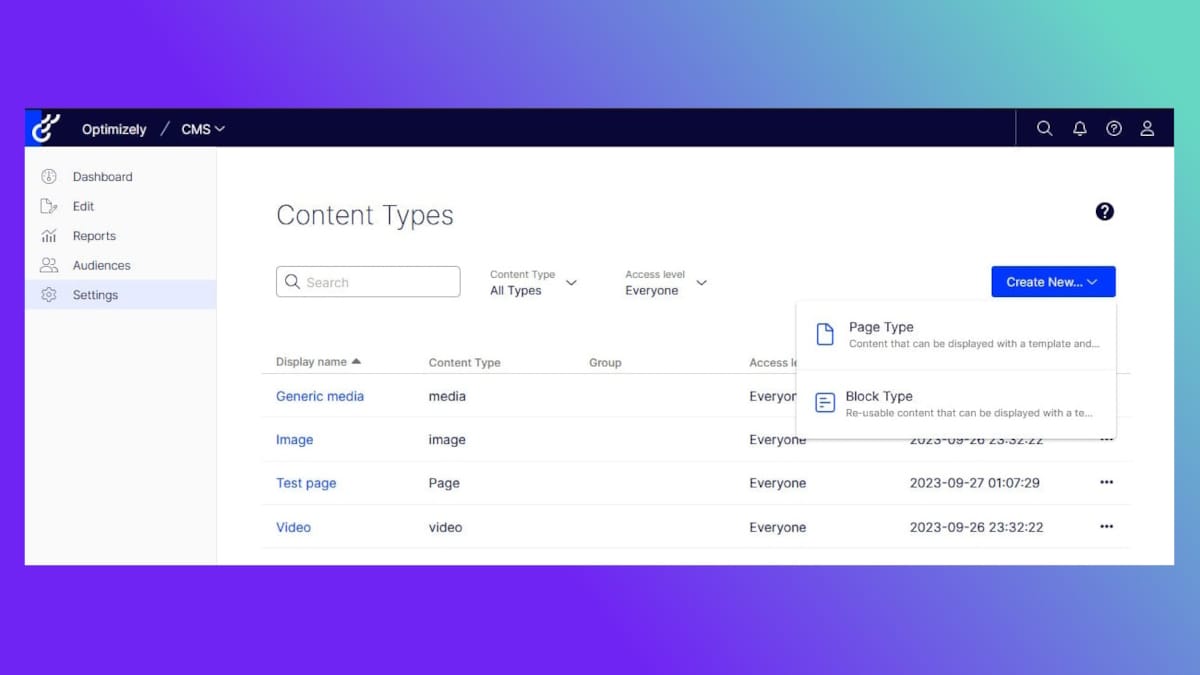
Optimizely SaaS Core was one of the major announcements at Opticon 2023. Read why SaaS Core represents an entirely new direction with a cloud-based, headless, API-based, and upgrade-free Optimizely platform.
Optimizely SaaS Core - an upgrade-free, low-code version of CMS
The general trend in recent years has been to reduce technical complexity and increase the level of cloud-based "plug-n-play", allowing for shorter time-to-market with new websites and functionality that can be reused across all digital channels.
Headless, APIs, and Low-Code/No-Code are often-used buzzwords in this context, and Optimizely haven't been idle in this area. During Opticon, they announced that they now have a SaaS version of CMS available - Optimizely SaaS Core - which not only opens the door to an entirely new customer base, but also entirely new ways of creating websites.
What sets the SaaS version apart from the traditional PaaS version?
Optimizely (formerly Episerver) CMS has always been a product that offers a high degree of customization and tailoring, whether you have your own on-premise environment, or have used the cloud-based operating environment (DXP). Both the CMS and Commerce products have been available for both on-premise and cloud-based operations.
Traditionally, much of the work involved in a website/e-commerce site has been technical development, which typically needs to be performed with the help of an Optimizely partner or skilled in-house developers. While Optimizely has been cloud-based, based on industry standards like ASP.NET Core and Azure, with APIs for all types of content manipulation, specialized expertise was usually required to develop content templates or override core functionality in Optimizely.
The traditional cloud-based version is known as PaaS (Platform as a Service), which means that Optimizely offers a hosting environment (DXP/Azure) and takes care of infrastructure, monitoring, and security. However, the application itself (the Optimizely website/e-commerce site, including core components and customized templates/functionality/integrations) is developed, upgraded, and rolled out to the operating environment by the customer (typically through an Optimizely partner).
The dependence on technical expertise is turned on its head by the new Optimizely SaaS Core. SaaS stands for "Software as a Service," and it denotes that Optimizely now delivers both the platform and the application - in other words, both the operating environment, databases, and the Optimizely interface with all its core components.
What are the main features of SaaS Core?
-
SaaS Core covers both CMS and Commerce: Whether you have just CMS or Commerce in combination with CMS, you can now set it up in the cloud without the need for coding.
-
Always updated: Optimizely takes care of both the operating environment and upgrades to core components, eliminating the need for partners to plan upgrades, as Optimizely handles everything.
-
No-code template building: You can now perform most of the template building and user/access configuration directly through a web interface without the need for coding. You can make changes without having to rely on a developer to deploy new code.
-
Low-code integrations: Much of the data exchange between CMS/Commerce and other systems you need can be accomplished through pre-built integrations ("connectors"). This allows you to set up integrations with a variety of pre-approved systems with just a few clicks.
-
Headless/API-first: Data stored in SaaS Core will be accessible via APIs. This opens the door for customers who want to create their own editing interface or build the presentation layer using their preferred frontend framework.
Screenshots of Optimizely SaaS Core
The following are concept images taken from the developer documentation for the beta version of Optimizely SaaS Core (CMS). These images demonstrate how to define content types with properties through the familiar Optimizely user interface.
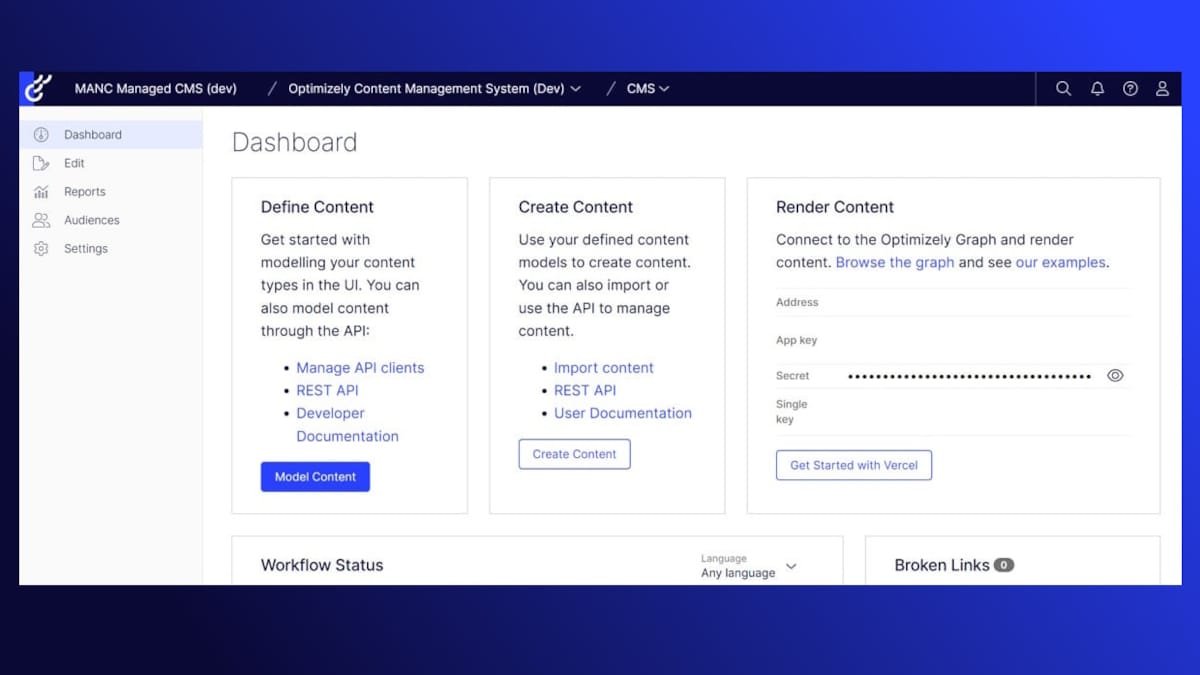
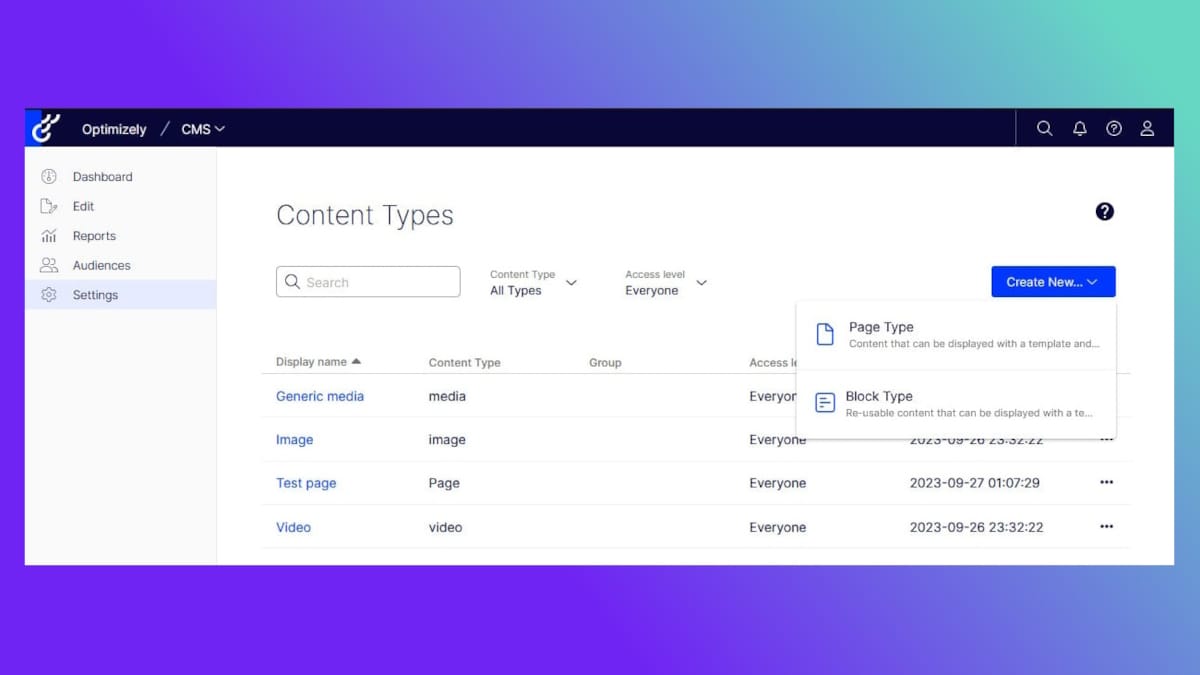
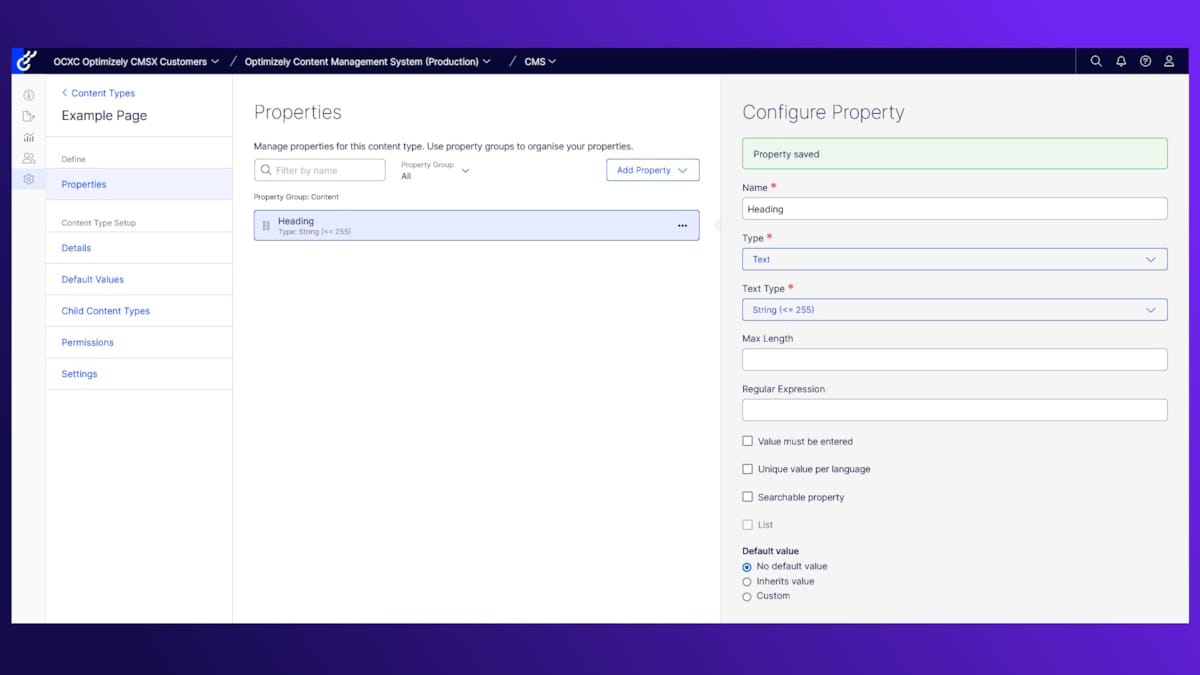
When will Optimizely SaaS Core be available?
Currently, SaaS is still listed under the beta program, meaning that development is ongoing, and general availability is getting nearer.
Optimizely themselves estimate that SaaS Core will be available to customers globally in Q1 2024.
Which Optimizely products are included in SaaS Core?
CMS and (Configured) Commerce will be available in SaaS Core variants. The traditional (developer-driven) versions of CMS and Commerce will be referred to as PaaS Core.
How do you build templates in Optimizely SaaS Core?
In SaaS Core, there is a no-code approach to template building (i.e. the way you define page types, block types, and forms (all content types).
This means that you can define content types, specify all the properties needed for a content type, determine which properties should be required/optional, and what data type they should contain (rich text, short text, numbers, images, lists, etc.) - all through a web interface.
For a glimpse of how this will look, take a look at the blog post "Redesign of Admin mode content types" by Grzegorz Wiechec. This is likely not exactly how it will look in SaaS, but the functionality will be fundamentally similar. You define a content type, specify each property, the data type to be stored in each property (rich text, short text, numbers, lists, images, etc.), whether the property should be required, and whether the value entered must adhere to a specific format (e.g., an email or a phone number).
Trivia: Ever since the beginning (when Optimizely was called Episerver), it has been possible to build templates through the web interface - for several years, it was actually the ONLY way to define templates, until defining templates in code became available. So in a sense, Optimizely (Episerver) have come "full circle" 15 years later - only now in the cloud.
Who is Optimizely SaaS Core suitable for?
SaaS Core is suitable for customers who aspire to any of the following capabilities:
-
Composable Flexibility: Those who desire a CMS/Commerce platform with more flexibility, allowing them to choose the components they need and omit those they don't need (not all websites/e-commerce stores require the 'full package').
-
Expertise: Individuals or organizations with limited access to technical development resources or who wish to increase their knowledge and control over their own website/e-commerce store.
-
Time to Market: Those with the need to set up simple campaign sites, pop-up stores, short-lived event websites, and the like quickly.
-
Structured Data: Those who want to store their content in a clean, structured format - without presentation-specific formatting (i.e., not in HTML format) - so that the content can be reused, processed, and synchronized across all types of digital channels.
-
Frontend Freedom: Those who want to create their own frontend (e.g., a custom editing interface) and not be dependent on Optimizely's traditional WYSIWYG editor and publishing workflow.
Will the traditional (PaaS) version of CMS/Commerce be discontinued?
No, the PaaS version (where templates, integrations, and core components can be customized) will continue to exist. There are still many customers who want full control over all the code, workflows, and functionality, and who want complete freedom to install the plugins they desire.
Optimizely states:
Optimizely CMS customers can now choose SaaS Core or PaaS Core. We are fully committed to supporting both for the long term and giving you the flexibility to choose the solution that's right for your business.
So I really don't need technical assistance to set up a SaaS Core website?
Well, this is partially true. You no longer need developer assistance for template definitions, since you can do this through the admin interface in Optimizely SaaS Core. Many integrations with the most well-known systems in digital marketing, product information, and customer loyalty will be plug-and-play through wizards that set up the API connection for you.
However, SaaS Core intentionally lacks a presentation layer - the frontend code that defines the visual appearance of your templates and how users experience the website.
The whole point of SaaS Core is to be headless - that is, to store content in a presentation-agnostic, structured format. This also means that content is initially defined as data fields - not as HTML - and it doesn't come with ready-made design templates (you might know this as "skins" or "themes" in platforms like WordPress).
So, you will need frontend developers to design the look of your templates and write the frontend code (HTML, CSS, React/Node, etc.) that fetches your content from SaaS Core via an API and presents it to end-users in the relevant channel - whether it's a website/e-commerce store, a newsletter, a mobile app, or a digital information screen. If you don't want to use Optimizely's interface to edit content, you will also need frontend developers to code a custom editing interface for you.
With Optimizely SaaS Core, will I still need an Optimizely implementation partner?
Since I work for one of the largest Optimizely partners (Epinova), I might appear biased, but my clear answer is YES.
From a purely technical standpoint, you might not be as dependent as before on development assistance from an Optimizely partner to get a website/e-commerce store up and running. However, a successful digital strategy is about more than just clicking through a "wizard" to launch a simple website - it's about optimizing the platform setup, ensuring smooth integrations and data exchange, and making sure the platform works well with other internal and external systems.
Many Optimizely customers also have their hands full managing daily operations, content production, and marketing and will need a partner to handle setup and maintenance. As mentioned earlier, there is a need for frontend expertise even though SaaS Core removes much of the technical complexity in template development.
At the same time, the Optimizely ecosystem is continually expanding, with many separate products and a lot of functionality to familiarize yourself with. There will always be value in having a partner who knows the "toolbox" well and can provide advice on which tool is suitable for which task - and, most importantly, how to use them optimally to get the maximum value from your investment. Good craftsmanship requires experience.
Learn more about SaaS Core:
- Introductory article by Rupali Jain, Chief Product Office at Optimizely
- Beta-access for SaaS Core while we wait for general availability (targeted for Q1 2024)
- Developer documentation for for SaaS Core
